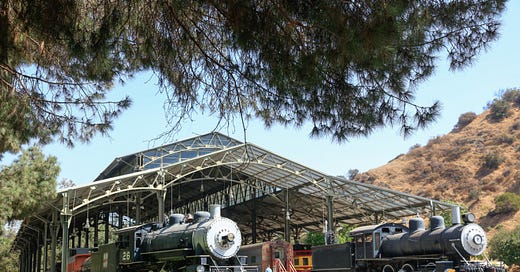Travelogue: Travel Town, Los Angeles
Discover a subversive showcase of machines made of iron and steel on a patch of land in Southern California
Discover a subversive showcase of iron and steel machines on nine acres within America’s largest contiguous public city park. I’m referring to the land in Griffith Park—inside Southern California’s city of angels—known as Travel Town. Coal, steam and diesel-powered locomotives with freight, passenger and other railroad cars occupy much of the property, which runs parallel to a freeway along the Los Angeles River.
The museum and grounds were conceived during Los Angeles’s historic post-World War 2 boom when ideas about unabashedly celebrating the manmade were more realistically imaginable, conceivable and possible. Travel Town began with a papier-mâché model of a place where covered wagons, military planes, passenger trains and motor cars could be experienced, studied and beloved in public. Government commissioners were persuaded to build it.
Remarkably, Travel Town still exists. Union Pacific dispatched railroad men to lay the display tracks. Los Angeles sponsored a dedication ceremony.…
Keep reading with a 7-day free trial
Subscribe to Autonomia to keep reading this post and get 7 days of free access to the full post archives.



